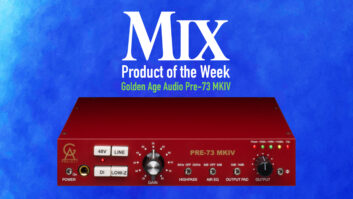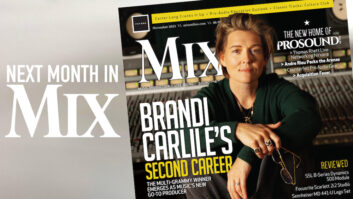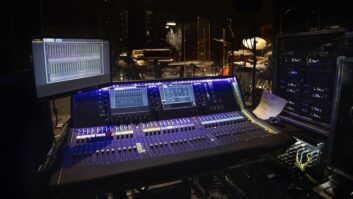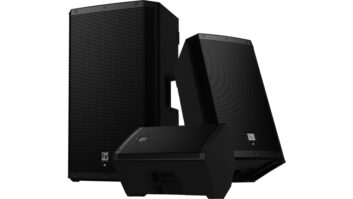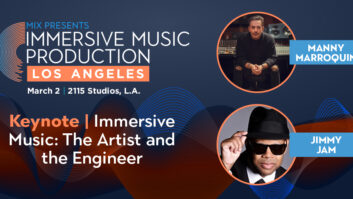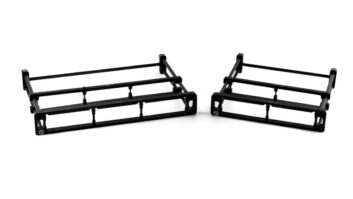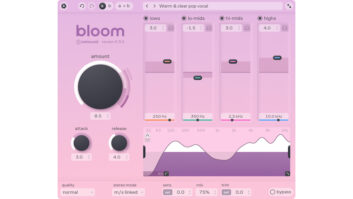Since their inception, DAWs had their own arms race going on, with each successive version piling on the features. From their humble beginnings as MIDI sequencers, programs added audio recording and editing, notation, virtual instruments, MIDI plug-ins, stretching, looping and more.

While many welcomed these advances, others noticed that their computer was no longer quite as peppy, some operations were more sluggish, and on occasion, updates “broke” the increasingly complex systems until a new update came along to fix the previous update.
Several companies saw these reservations as a way to enter the world of DAWs through specialization. For example, Ableton Live zeroed in on the groove/DJ market, and while the company has added DAW-type features, it has treated these more as significant enhancements for its core user base than a way to compete directly with programs like Pro Tools.
Or take Sony Vegas, which after starting as an audio/video editing program split off into Vegas Video (with greatly enhanced video editing capabilities) and Vegas Audio. Vegas Audio faded into obscurity, but Vegas Video struck a nerve, going on to become a solid (and easy-touse) video editing program combined with exceptional audio capabilities.
Now several new DAWs have hit the market, with each one aiming for a particular niche. Probably the one most like a conventional DAW is PreSonus’ Studio One Pro, but the company promotes it as offering power without the bloat. You’ll find several omissions: no video support, a very basic roster of virtual instruments (although you can use third-party devices), no notation and limited looping capabilities. But, you’ll also find some genuine innovations, like a mastering section that resembles Sony’s CD Architect on steroids. It ties in with Studio One’s song files so that if you create an album project, listen back, and then decide the drums need to be just a teeny bit louder in one song, you can edit the song while working in the mastering section. Then you can update and mix the file automatically as you work on your album project. Also cool: “micro views” of effects, so that even with a full console view open, you can tweak crucial processor parameters. Studio One Pro is like nouvelle cuisine—the portions may not be huge, but they’re done with style and taste really good.
EnergyXT2.5 is competing for welterweight champion of the world, and while it’s arguably the most laptop-friendly, crossplatform “DAW” out there (including Linux with Netbooks), desktops can also apply. It’s super-fast and efficient; the feature set includes pretty much everything you would want (excluding video), such as sophisticated stretching and looping courtesy of zPlane’s algorithms, VST support, path delay compensation, several effects, a sampler/synthesizer, per-channel equalizer in the mixer, in-track MIDI editing, REX file auditioning and the like. But while it may seem like a big program, energyXT2.5 starts up pretty close to instantly, and everything about it is fast, whether you’re scrolling through windows or inserting devices. You can even use it as a VST plug-in within Windows DAWs. Clearly aimed at creative people on the go, energyXT2.5 feels somewhat like running a 90 MHz Pentium I-compatible program on a Core2Duo.
Then there’s Propellerhead Record, which seems inspired by G. K. Chesterton’s famous quote: “Art is limitation. The essence of every picture is the frame.” As with their perennially popular Reason, the Propellerheads created a self-contained universe with (again!) no video support, but not even support for plug-ins and virtual instruments. In its basic state, Record is a DAW that emulates a hardware studio, right down to the faux SSL console and patch bay. (Of course, these are also the guys who invented Re- Wire, so if you want lots of instruments and effects, you can ReWire Reason into Record.)
Using Record is an unusual experience, because it feels like working in a studio circa 1989 or so, even mimicking the workflow of that kind of recording experience—right down to being able to “varispeed” your entire project. As with the previously mentioned programs, it’s fast to load, smooth, efficient, and just about impossible to make crash—if you’re into stability, small is indeed beautiful.
So are these just toys? Far from it. Some pros are taking a serious look at how they use software, and deciding they’re willing to forego little-used features in favor of a program that’s targeted to their specific needs. These programs aren’t for everyone; if your gig bounces among recording music, doing narration, laying down soundtracks, spotting effects to video, and printing out lead sheets for session musicians, look elsewhere. Conversely, those with targeted needs now have targeted programs. EnergyXT2.5 and Record in particular hint at what might be the next trend: à la carte-style modularity that starts with basic recording, then adds only those optional-at-extra-cost features you need (e.g., ReWiring for virtual instrument support via Reason, or adding a video window). If nothing else, these programs prove that the DAW world still has a few surprises up its sleeve.
Musician/author Craig Anderton is executive editor of EQ magazine, and editor in chief of Harmony-Central.com.

